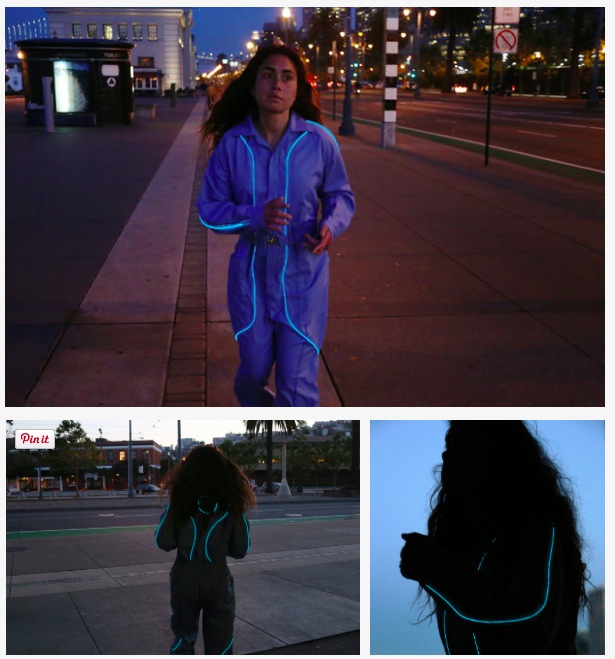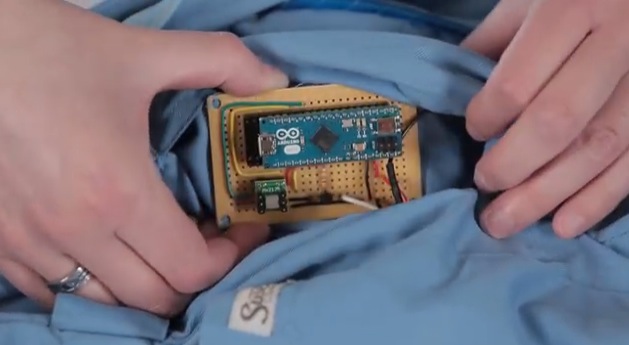Since building my
Flight Suit last year, I haven't posted many photos or videos of the finished suit or of its inner workings, so I will make a series of posts about it over the next few weeks. I would not have been able to complete the project without the generous sharing of the OSHW community, and I hope some bit of my project's details will be of some use to somebody.
All work on the suit revolved around a composite image I put together early to lay out the LED light strips, with each
level numbered (0-11) and each
segment getting a unique letter designation (A-X). Arms are shown up and down since the suit adapts to the arms' positions, lighting up each segment according to its current level.
From that composite image, I built a
segment spreadsheet to keep track of the 22 LED strips through construction and programming. It includes all of the segments' lengths and progress steps, plus designations of levels, segment letters, and channels.
The system's electronic components are distributed throughout the suit using existing fittings on the suit when possible:
- The 12V Li-ion battery pack which powers the suit fits nicely in the right thigh pocket. Its switch acts as the main system on/off switch. Spare battery packs fit in zippered ankle pockets.
- The main system board sits in the upper left arm pocket: an Arduino-compatible board with a shield containing the left arm accelerometer board and jacks for the right arm accelerometer, MOSFET boards, ZX-Sound, and remote control.
- The right arm accelerometer sits in a small pocket sewed onto the right upper arm.
- MOSFET boards hang in the chest pockets, attached to the leads routed through the suit to the LED strips.
- The ZX-Sound audio board is mounted with Velcro to the included patch on the left chest.
- The remote control dangles from its cat 5 cable or attaches to an existing Velcro strip at the waist.
I plan to post at least once on each of these topics:
- System layout, schematics and final firmware
- LED strips: planning, splitting/making, mounting
- MOSFET boards: driving the LED strips
- ZX-Sound: incorporating audio response into the system
- Arm accelerometers: reading and filtering and controlling segment/level mapping
- Remote control
- Main program design: fast looping, modes, ShiftPWM
- Wearability: marrying the system and the suit, sewing, gluing, maintenance
If there's something else you're curious about, please email me or post a comment. As I post more, I will continue to upload photos to my
Flickr set.








